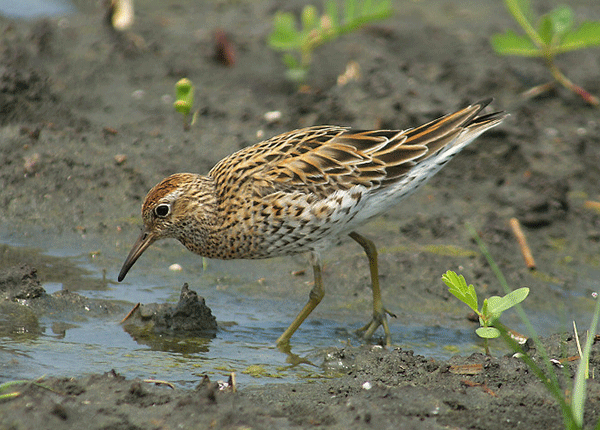
The Sharp-tailed Sandpiper (Calidris acuminata) is one of our more striking migratory waders. Sporting a tawny crown and back, straight black bill and olive legs, the medium-sized ‘Sharpie’ is easy to pick out in a flock of smaller waders.


Difficulties arise when they mix with the similar looking Pectoral Sandpiper (C. melanotos). The yellow legs and defined markings between the breast and belly of the Pectoral Sandpiper help to distinguish it from Sharpies.


Sharp-tailed Sandpipers breed in the Tundra of the high Arctic in Siberia. When they return to Australia, prevailing conditions determine where the flock ends up.
If Australia’s red centre is in flood, Sharpies will stop to forage in our vast, briny inland lakes. In dry years, they will travel the extra miles to join Red-necked Stints and Curlew Sandpipers in estuaries and mudflats along the southern coast.
The Sharp-tailed Sandpiper is not a picky eater. They will happily scoff aquatic worms, insects, molluscs, crustaceans and even seeds. They are often seen foraging around freshwater wetlands, mangroves, rocky shores and beaches.






